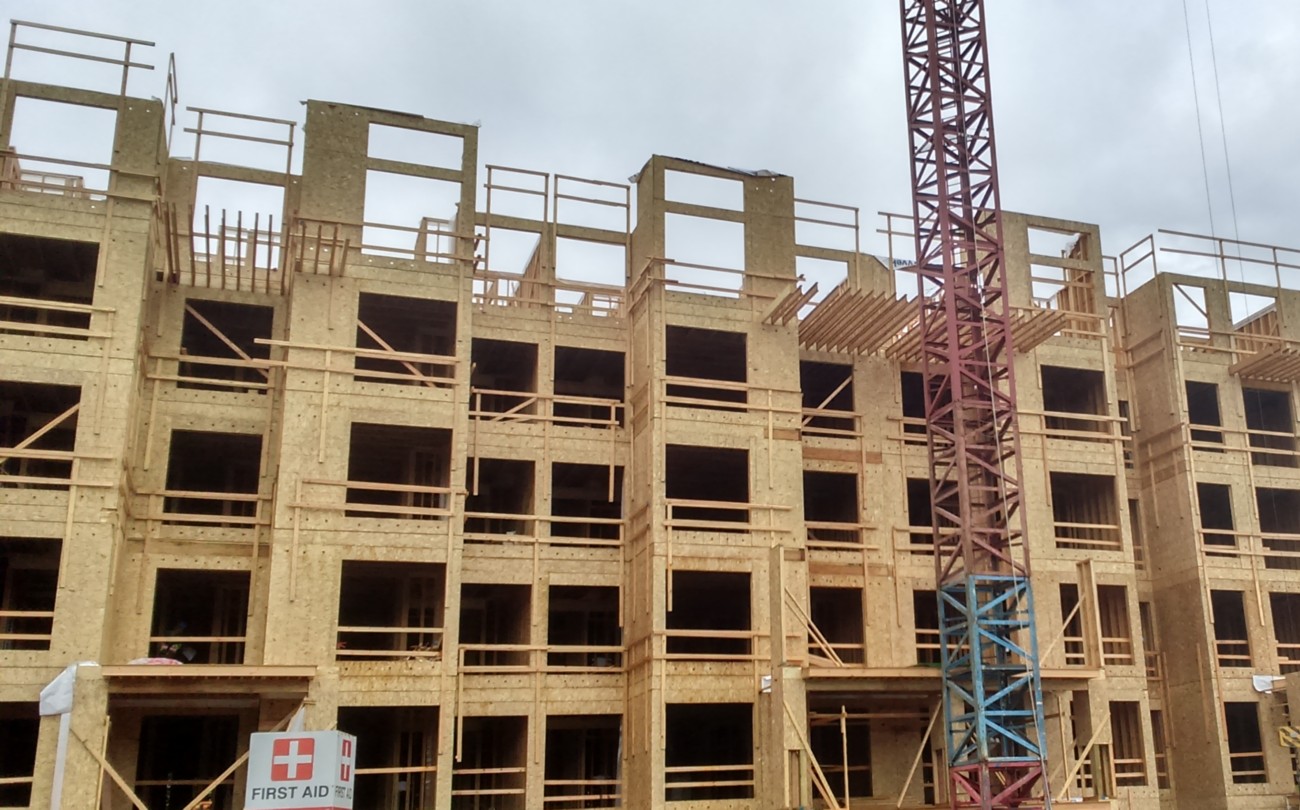

Getting the facts straight about wood versus concrete


By: William Larson
A recent Industry Trend Analysis published by Business Monitor International Ltd on evolving technology in the construction sector (Industry Trend Analysis – The Ongoing Tech Evolution: Construction Sector Developments In 2018 (6 Jul 2018) noted a growing focus on sustainability in new buildings. The article highlighted non-traditional building materials such as timber, which it said offered significant advantages relative to steel and concrete.
A notable statement to this effect was “Timber is lighter without sacrificing strength, allowing for a reduction in foundation cost, and because its components are prefabricated, the construction process is faster. Timber also offers sustainability benefits, as it comes from a renewable source and reduces on-site waste in comparison to cement.”
BMI Research is a well-respected publication known for its excellent coverage of industry trends. That is why this one-sided and factually deficient statement is so unusual. In fact, cement is simply an ingredient of concrete, the most sustainable and resilient building material on the planet and is typically only between 10%-15% of the mix volume accompanied by aggregate and water.
Certainly, some forms of timber are lighter than concrete or steel. So too some engineered wood building products demonstrate strength characteristics approximating those of steel or concrete. But this does not mean wood is a suitable substitute for all forms of building structures. Nor is it always a less costly form of construction. The fact that some wood-based building materials are prefabricated offsite is not exclusive to timber. Prefabricated concrete and steel materials have been in use for decades.
The supposed benefits of timber due to its renewable origins (i.e. trees) and the assertion wood has less “on-site waste in comparison to cement” is where certain of the sustainability inferences in the article come “unglued”.
First, recent research proves only a small amount ( between 18-30%) of the carbon originally stored in a living tree makes its way into long-lasting building products such as dimensional lumber or cross laminated timber. So too, while wood in buildings retains a small measure of this carbon over its lifespan, wood in landfills actually emits methane, which has a Global Warming Potential 28-36 times greater than CO2.
But the story does not end there. Recent research also has shown that concrete reabsorbs much of the carbon previously emitted from cement production through a process called carbonation. Simply put, concrete is also a carbon sink.
There are many factors that must be considered before evaluating claims that one or another building type or product offers a better environmental return. To understand the full environmental impact of a structure over decades of use, all phases, starting before construction and continuing through demolition, must be considered.
What this indicates is that comprehensive life cycle assessment, from cradle to grave, is a more realistic basis to evaluate the true sustainability benefits of building materials, a point the article might well have stressed more forcefully.
The wood versus concrete debate is a tired, cliché-riddled argument that has little scientific merit. There are many factors that determine which is the most appropriate building material for a given structure, location or purpose.
The real issue is the need for more resilient buildings better able to withstand the impacts of an ever-changing climate. As Evan Reis, head of the US Resiliency Council notes “In weighing the true sustainability of any material we need to consider its resilience to the natural environment in the long term. That is, after all, what builds stronger more resilient communities.”
Editors Note: The Pacific Northwest Building Resilience Coalition will be sponsoring a keynote address by Evan Reis, head of the US Resiliency Council on July 24th at the 2018 Summit of the Pacific Northwest Economic Region. See here for more details.
Recent Posts
Mobilizing Resilient Design and Construction
Implementing a multifaceted strategy can motivate state and local governments to prioritize resilient design and…
Insurance Pricing: Navigating a New Era of Risk
The growing frequency and severity of climate-related disasters present a significant challenge for the insurance…
Designing for Resilience … It’s A Must
We see far too often structures built to current code that lack planning and design…
What are the Real Benefits of Designing for Resilience
While designing for resilience requires initial investments, the long-term payoffs often far outweigh these costs.…
Reducing Disaster Risks and Protecting Insurability in the Pacific Northwest
Proactive measures to enhance resilience and preparedness are critical to mitigating insurability risks. This will…
How to Achieve More Resilient Building Codes
More comprehensive disaster prevention perspectives are needed to enable communities better to withstand the increased…


